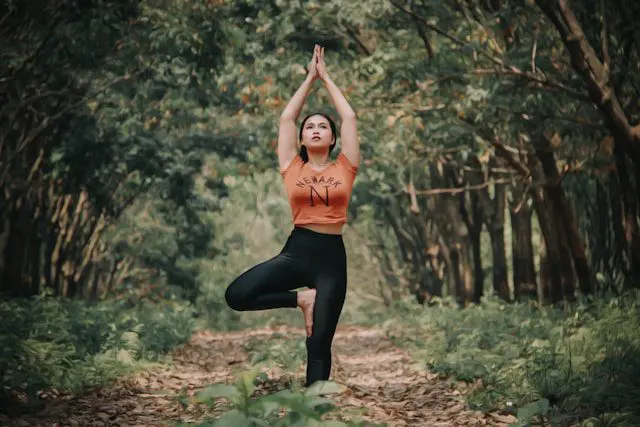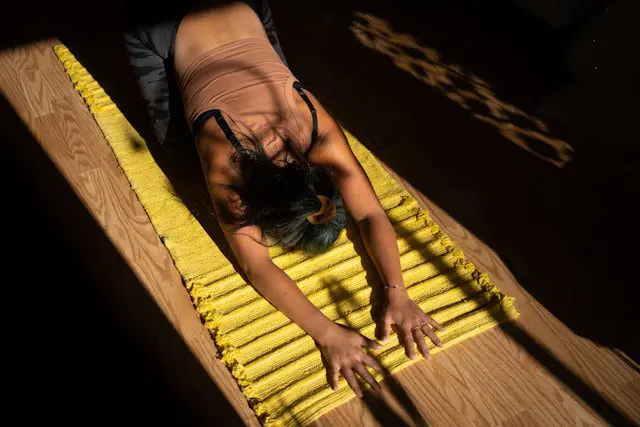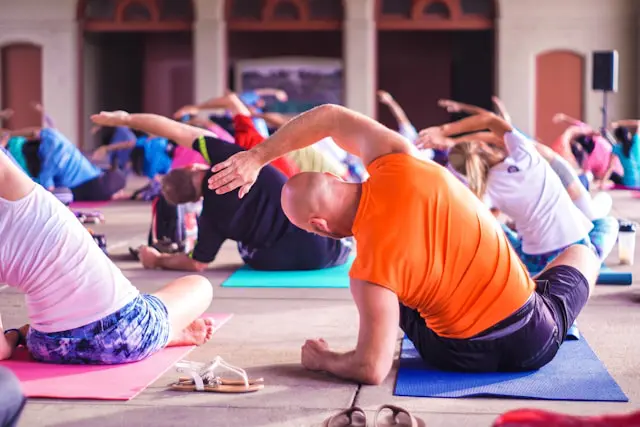Good posture is more than just standing up straight. It’s about aligning your body in a way that reduces strain on muscles and ligaments, enhances your breathing, and boosts your overall confidence. Poor posture can lead to various health issues, including back pain, neck pain, and even headaches. Fortunately, yoga offers a holistic solution to these problems. By incorporating simple yoga poses for good posture into your daily routine, you can significantly improve your posture and enjoy the myriad other benefits that come with it.
Why Posture Matters
Posture is the position in which you hold your body while standing, sitting, or lying down. Good posture involves training your body to stand, walk, sit, and lie in positions where the least strain is placed on supporting muscles and ligaments during movement or weight-bearing activities.
Benefits of Good Posture
- Reduces Back and Neck Pain: Proper alignment helps prevent muscle strain and overuse.
- Improves Breathing: Correct posture opens up the diaphragm, allowing for deeper and more efficient breathing.
- Boosts Confidence: Standing tall can positively impact your mood and self-esteem.
- Enhances Digestion: Proper alignment of your body allows your internal organs to function more efficiently.
Simple Yoga Poses for Posture Improvement
Incorporating yoga into your daily routine can help correct postural imbalances. Here are some simple yet effective yoga poses that can transform your posture.
1. Mountain Pose (Tadasana)
Mountain Pose is the foundation of all standing yoga poses and a great starting point for improving posture.

Instructions:
- Stand with your feet together, arms at your sides.
- Distribute your weight evenly across both feet.
- Engage your thighs, lift your kneecaps, and draw your belly in slightly.
- Lift your chest and roll your shoulders back and down.
- Keep your chin parallel to the floor and your gaze forward.
- Hold for 60 seconds at a time.
2. Downward-Facing Dog (Adho Mukha Svanasana)
Downward-Facing Dog is a full-body stretch that lengthens the spine and strengthens the shoulders.

Instructions:
- Start on your hands and knees, with wrists aligned under shoulders and knees under hips.
- Spread your fingers wide and press firmly into your palms.
- Tuck your toes and lift your hips up and back, straightening your legs.
- Press your heels toward the ground and keep your head between your arms.
- Hold for 1 – 2 minutes at a time.
3. Cat-Cow Stretch (Marjaryasana-Bitilasana)
This gentle flow between two poses warms up the spine and helps release tension in the back and neck.
Instructions:
- Start on your hands and knees, with wrists under shoulders and knees under hips.
- Inhale, arch your back, and tilt your pelvis up for Cow Pose.
- Exhale, round your spine, and tuck your pelvis under for Cat Pose.
- Continue flowing between Cat and Cow for several breaths for a minute.
4. Warrior I (Virabhadrasana I)
Warrior I is a powerful pose that enhances balance, stability, and alignment.

Instructions:
- Stand with your legs about 3 to 4 feet apart.
- Turn your right foot out 90 degrees and your left foot in slightly.
- Raise your arms above your head, palms facing each other.
- Bend your right knee, keeping it in line with your right ankle.
- Gaze up at your hands, and hold your back leg straight and strong.
- Hold this pose for 30 to 60 seconds, then switch sides.
5. Tree Pose (Vrikshasana)
Tree Pose helps improve balance and stability, and strengthens the muscles involved in maintaining good posture.

Instructions:
- Stand erect and drop your arms to the sides of your body.
- Bend your right knee and place the right foot high up on your left thigh. Make sure the sole is placed firm and flat on the thigh.
- Keep your left leg straight and find your balance.
- When you are well balanced, take a deep breath in, gracefully raise your arms over your head from the side, and bring your palms together in ‘Namaste’ mudra (hands-folded position).
- Look straight ahead in front of you at a distant object. A steady gaze helps maintain a steady balance.
- Hold the pose for 30 seconds to 1 minute and release the pose as you exhale.
- Repeat with the opposite leg.
6. Child’s Pose (Balasana)
Child’s Pose is a restful pose that stretches the spine, hips, and shoulders, promoting relaxation and alignment.

Instructions:
- Start on your hands and knees, then sit back on your heels.
- Extend your arms forward and rest your forehead on the mat.
- Allow your chest to sink towards your thighs and breathe deeply.
- Hold the pose for a minute.
Maintenance Tips: Yoga Poses for Good Posture
- Be Mindful of Your Alignment: Regularly check in with your body throughout the day to ensure you’re maintaining proper alignment.
- Strengthen Core Muscles: A strong core supports good posture. Incorporate core-strengthening exercises into your routine.
- Take Breaks from Sitting: If you sit for long periods, take regular breaks to stand, stretch, and move around.
- Use Ergonomic Furniture: Invest in ergonomic chairs and desks that promote a healthy posture. Check out our guide to ergonomic office chairs for back pain if you fall into this category.
- Get a High-Quality Yoga Mat: It can make all the difference in your practice.
- Try an App: The DownDog app creates a routine tailored to your preference and it constantly varies from day-to-day so you don’t get bored. We highly recommend it. Subscriptions are $10/month.

Transforming Your Posture with Consistency
Yoga is not a quick fix but a journey towards a healthier and more aligned body. By consistently practicing these simple yoga poses, you’ll not only start to notice improvements in your posture but your overall well-being.
Good posture can transform your life by reducing pain, improving your breathing, and boosting your confidence. Incorporate these yoga poses for posture into your daily routine and watch your alignment improve over time. Remember, consistency is key, and every step you take is a step towards a healthier you.
Engage with Us
We’d love to hear about your experiences with yoga and posture improvement. Share your stories and tips in the comments below, and let’s build a community that supports each other on this journey to better health and wellness.
Next, did you know about the link between yoga and meditation? Learn more about the benefits of meditation and how mindfulness can help your yoga practice.


Leave a Reply